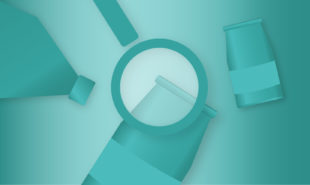Companies to report their packaging materials more accurately

Packaging data reporting will change next year. Consumer and B2B packaging, single-use and reusable packaging as well as the materials used in multi-material packaging will be reported separately, while data for exports will no longer need to be reported.
The new reporting guidelines will cause additional work at Rinki’s member companies, at least in the early stages, so we recommend that companies get ready in time. Meira Oy, for example, has already adopted the new reporting model this autumn.
According to Päivi Haapasalo, who works as a buyer at Meira, the challenge in reporting is that Meira uses several different packaging accessories made from a variety of materials as well as composite materials. Multi-material packaging comes to Finland with imported products, and the materials they are made of are marked differently.
— In practical terms, streamlining reporting means that suppliers will have to provide more detailed information on all materials, and they must be reported in a uniform format, says Haapasalo.
It will not be possible to report hundreds of materials manually, so an automated solution must be found. Meira renewed its ERP system three years ago. However, the more detailed report required by the EU cannot be compiled using the current system, so it will need a little tweaking.
Despite the additional work, Meira sees the changes in reporting as a step forward as the development and recyclability of packaging materials is very important to the company.
— This will mean checking a fair amount of data. Our warehouse staff can also provide us with important information about the different packaging materials, says Haapasalo.
— The strict transition period brings additional challenges. We will probably have to use two different reporting systems in parallel during the transition phase, says Marleena Bask, Meira’s Director of Strategy and Sustainability.
The new reporting method will affect the development of packaging
Despite the additional work, Meira sees the changes in reporting as a step forward as the development and recyclability of packaging materials is very important to the company.
According to Bask, the changes in reporting will affect the future development of packaging. Meira’s goal is for all its packaging materials to be made from 100 % recycled, recyclable and renewable material by 2030. The company is committed to halving its greenhouse gas emissions by the end of 2022.
— We take into account eco-friendliness, legislation and the wishes of stakeholders and consumers in our packaging. Even if the changes in reporting will mean additional work for us, it’s all very useful as we’d need to apply the changes at some point anyway, Bask and Haapasalo explain.
Haapasalo is very happy with the support that Finnish Packaging Recycling RINKI Ltd provides when it comes to problems related to reporting.
— We have discussed problematic issues with Rinki, and they have offered a lot of practical help when we haven’t been clear about the distinction between consumer and B2B packaging, says Haapasalo.
This is how the reporting of packaging will change
1. Consumer and B2B packaging will be reported separately
In the future, all packaging will be reported either as consumer packaging or as B2B packaging. Consumer packaging comprises packaging that goes to or may go to consumers or households along with products. Examples include sales packaging for consumer products and some types of grouped packaging. Consumer packaging also includes packaging used at the point of sale for packing products, such as paper and plastic bags, boxes and single-use containers that consumers take with them.
B2B packaging comprises the packaging that goes to companies along with products. B2B packaging includes sales packaging as well as grouped and transport packaging for products intended for companies. B2B packaging also includes such grouped and transport packaging for consumer products that does not go to consumers with the product.
If the packaging is suitable for consumer use, it is reported as consumer packaging, even if it goes to a company. For example, food packaging that can be sold to households is considered consumer packaging even if it goes to a restaurant.
2. Single-use packaging and reusable packaging are reported separately
Single-use packaging is packaging that is intended to be used only once for its original purpose. Single-use packaging, such as corrugated cardboard boxes, can also be reused a few times, but their reuse does not need to be reported on the declaration form.
Reusable packaging is designed to withstand multiple uses for its original purpose. Examples include plastic bakery and meat boxes, reusable pallets, metal roller cages and refillable gas bottles.
3. Packaging made up of several different materials will be reported in more detail
Until now, loose parts in packaging, made of different materials, such as a glass jar and its metal lid, have been reported separately to Rinki. These will continue to be reported separately.
The materials contained in packaging will be reported more accurately when the different materials cannot be easily separated by hand.
All materials that make up more than five percent of the total weight of the packaging will be itemised under the predominant material.
The predominant, or main, material in packaging is the material that accounts for the largest proportion in weight. A single material does not need to be itemised in the report if it accounts for less than five percent of the weight of the packaging. In this case, the material in question is included in the predominant material.
— For example, the main material in a juice carton is paper fibre, and you will also report the plastic contained in the packaging as it accounts for more than five percent of the weight of the packaging. If the packaging also contains aluminium, which accounts for less than five percent of the weight, this is included in the weight of the main material, i.e. paper fibre, explains Maija Peltola, Customer Service Manager at Finnish Packaging Recycling RINKI Ltd.
In case of multi-material packaging, the packaging is reported in the tab on the declaration form corresponding to its main material. The other materials are reported on their own rows under the main material.
In the new reporting system, single-material packaging refers to packaging that contains only one material or that contains a small quantity of another material or other materials, each of which weighs a maximum of five percent of the total weight of the packaging.
4. Exported packaging will no longer be reported
Reporting will be made easier for packaging of exported products as this type of packaging will no longer need to be reported. Exports to the Åland Islands will no longer be reported to Rinki either.
See the new reporting guidelines on the Rinki website.
Rinki will organise a training event on reporting for all business customers on 21 October 2020. A recording of the training event will be available on Rinki’s Extranet service after the event.
